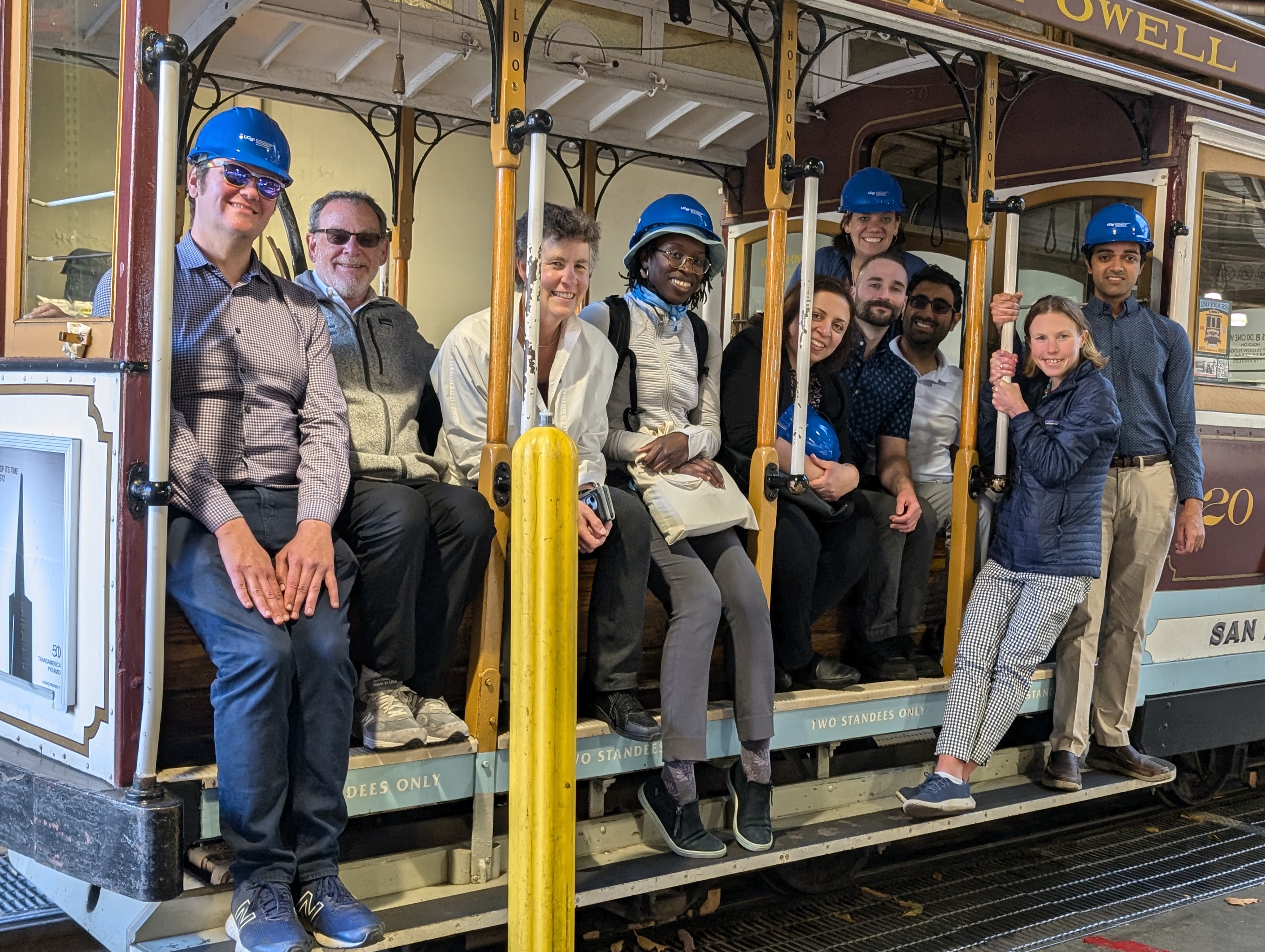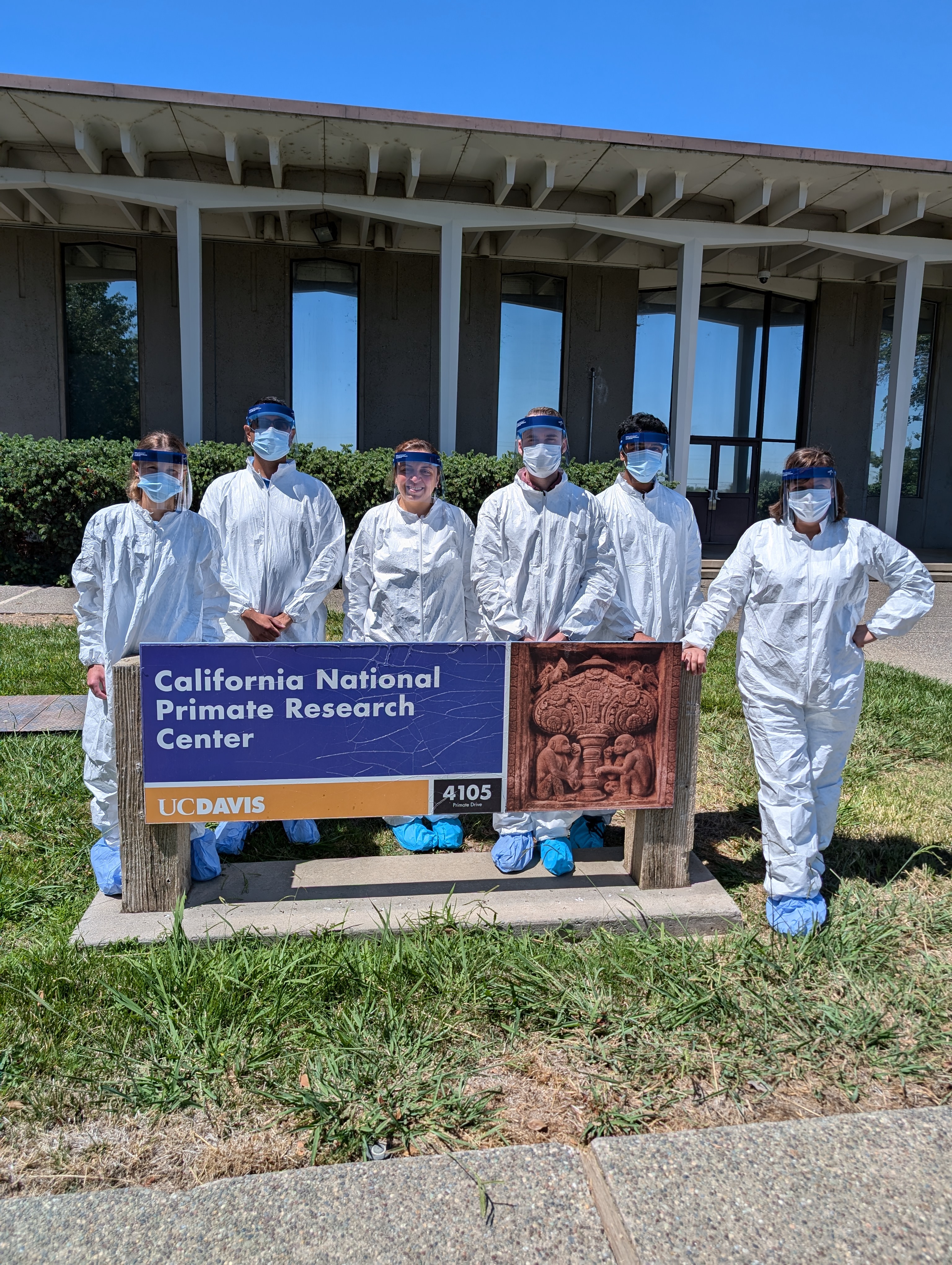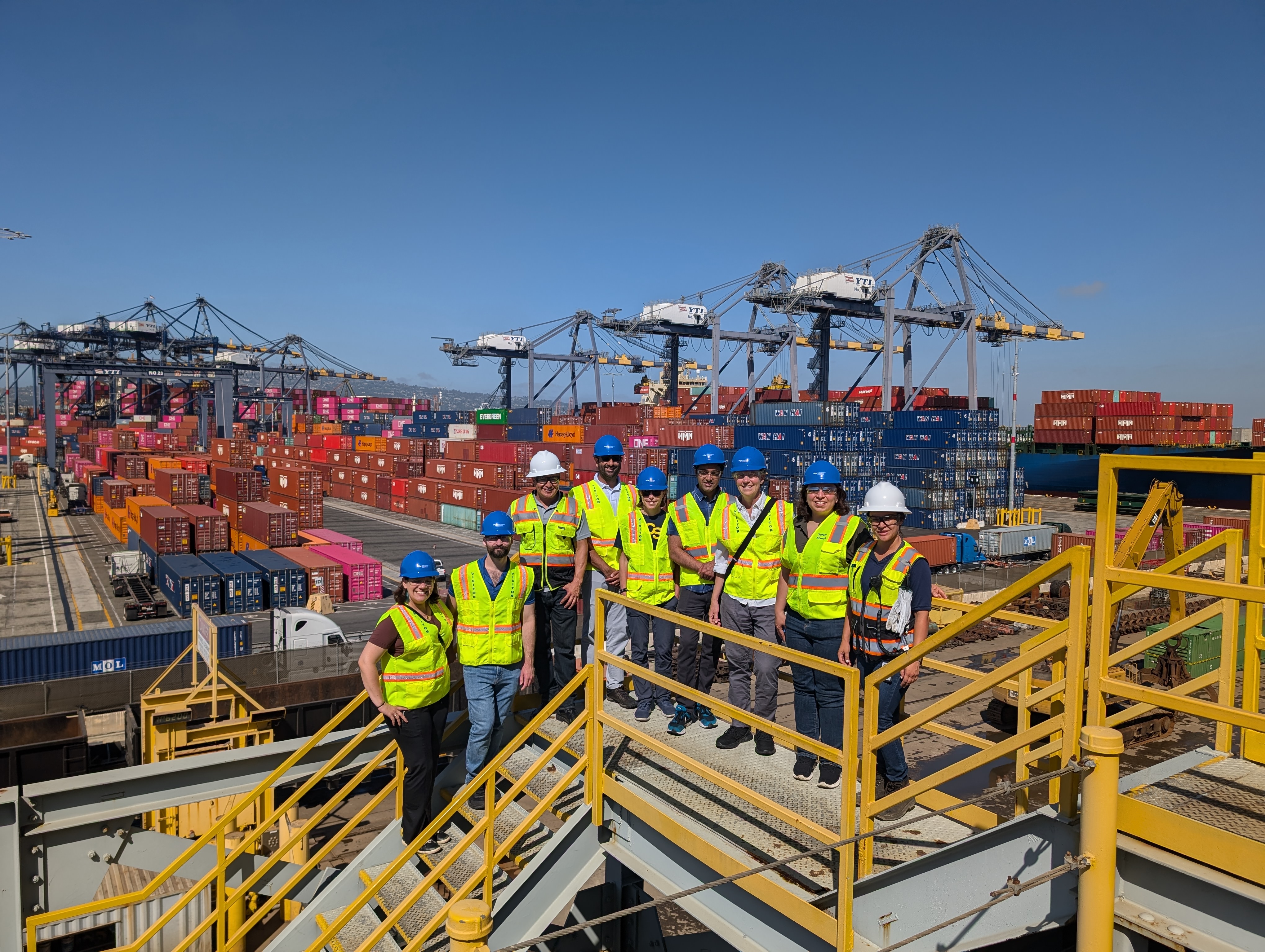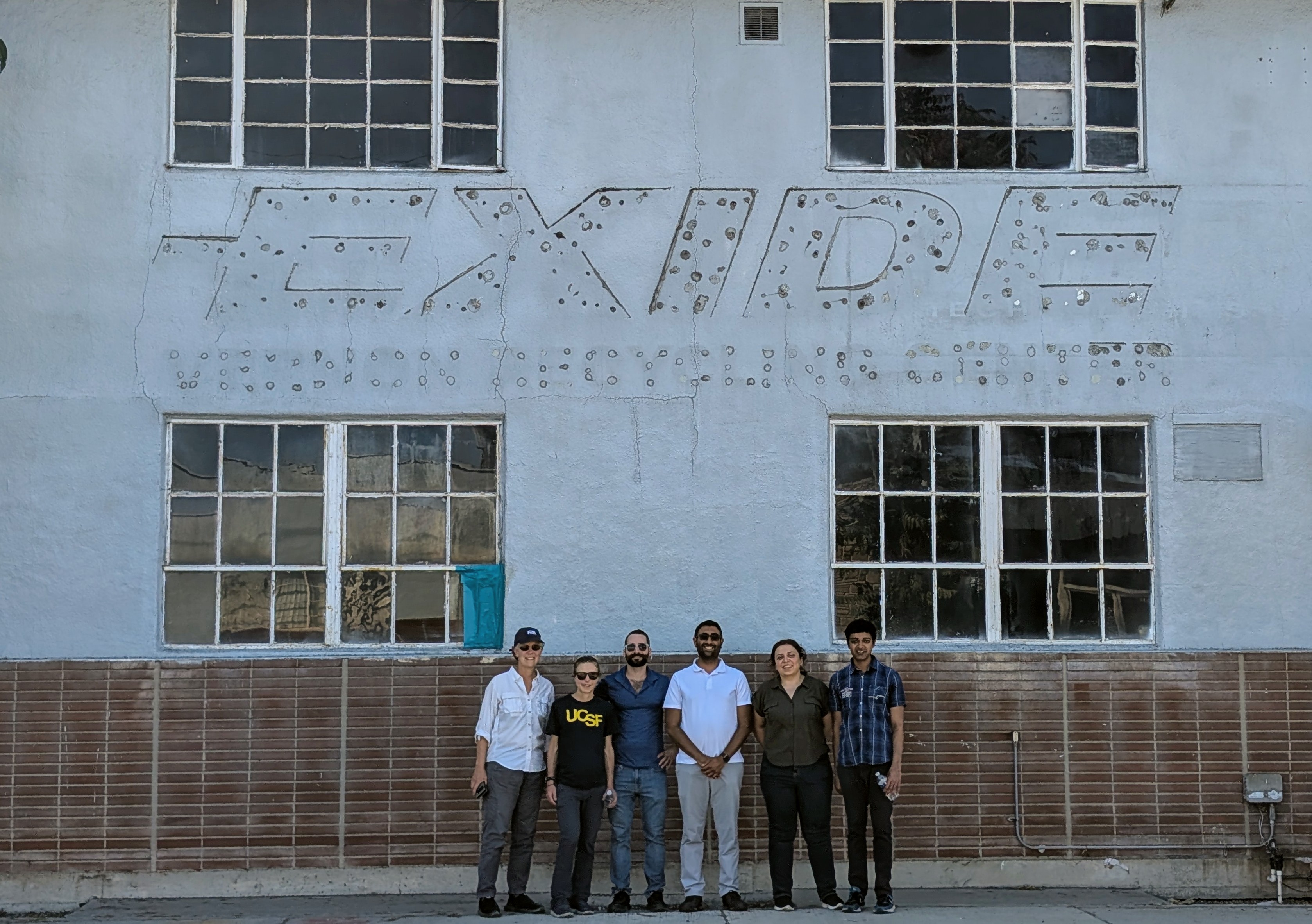Curriculum
Curriculum
Clinic
Trainees participate in clinic one half-day per week throughout both years of the program. Clinic is typically at UCSF Mount Zion, although can be supplemented by sessions at the Kaiser Permanente Occupational Medicine Clinic in San Francisco.
Clinic at UCSF Mount Zion includes Occupational/Environmental medicine and Occupational Health. Cases include referrals for exposures, toxicology, and complex musculoskeletal disorders, bread and butter workers compensation, and rarely families and pediatric cases seen in collaboration with our Medical Toxicology and Pediatric Environmental Health Specialty Unit partners.
Trainees also are on call to cover the UCSF needle stick hotline for about 8 weeks per year. Calls are taken from home at night and on weekends.

Berkeley MPH Coursework
All OEM trainees without an MPH or equivalent degree attend the UC Berkeley School of Public Health to obtain a master’s degree (MPH) through its 11-month Interdisciplinary Studies track. In some cases an MPH in Epidemiology or an MS or MPH in Environmental Health Sciences may be considered but should be discussed and approved by the Residency Program prior to application to the School of Public Health for its December 1 deadline.
For the MPH, at least 42 credits are required for graduation.
Sample MPH Curriculum
Throughout the year: Interdisciplinary MPH seminar and thesis project work
Fall:
Probability & Statistics
Health Policy and Management
Health and Social Behavior
Epidemiologic Methods
Topics in Environmental Medicine
One elective (e.g. Outbreak Investigation)
Spring:
Toxicology
Biomechanics/Ergonomics
Preventive Medicine Seminar
Environmental Health Sciences
Occupational and Environmental Epidemiology
Leadership mini-course

Site Visits
The August schedule features site visits during both years of training. This includes an Industrial Hygiene (IH) curriculum, a range of industrial and environmental health-related workplaces, and written assessments across the SF Bay Area and beyond. Examples include refineries, metals manufacturing, foundries, cement manufacturing, pharmaceutical and biotech facilities, research laboratories, sewage treatment facilities, waste handling facilities, distribution centers, food processing, dairies, farms, wineries, nail salons, construction sites, maintenance of the Golden Gate Bridge and airlines. There are 12-15 site visits in August and most of our residents find this to be one of the most fun aspects of the training.
In August of the second year, trainees also take the Training in Clinical Research (TICR) Summer Workshop at UCSF which provides grounding in applied biostatistics, epidemiology, and clinical study design.

Research and Academic Training
Scholarly work is a vital element of our program. The program seeks trainees who will advance scientific knowledge with the goal of recognizing and preventing occupational and environmental disease. Dr. Matt Gribble is our principal research mentor, and there are many supporting and core faculty members who sponsor trainee research activities.
During each year, trainees are expected to choose a research project and research mentor and work on a project that will be presented in March at our annual UCSF OEM CME conference poster session. This project fulfills the Capstone requirements at Berkeley for those completing an MPH. Projects typically span most of the year with two months of full-time work for those in the second year. Residents are encouraged to develop a manuscript for publication in a scientific journal.
Throughout both residency years, trainees attend Grand Rounds twice a month, Journal Club once a month, and noon conference 1-2 times a week.
Trainees are evaluated semi-annually based on how well they have achieved goals and objectives for each aspect of training through our ACGME-mandated Clinical Competency Committee (CCC). Each resident is evaluated based on 26 ACGME Milestones.
In addition to the CCC, a Program Evaluation Committee (PEC) assesses all the curriculum components including rotations and coursework. Both the CCC and the PEC report to the Residency Advisory Committee that meets two times each year.
Our residency is primarily limited to standard office hours with rare weekend obligations, making it a good fit for people with families and other interests.

Rotations
Clinical Rotations
Kaiser Permanente Occupational Medicine Clinic (Kaiser on the Job)
General primary occupational medicine services with an emphasis on musculoskeletal evaluations and ergonomic issues. Location: Opera Plaza, San Francisco, CA.
UCSF and Zuckerberg San Francisco General Occupational Health Services
Hospital- and university-based employee health services at UCSF-Mt Zion and Zuckerberg San Francisco General (ZSFG) covering a range of services including health surveillance, infection control, preplacement (including drivers’ examinations), and policy development and implementation. Location: San Francisco, CA.
San Francisco Veterans Affairs Medical Center (SFVAHCS)
A variety of clinical experiences including general occupational medicine; compensation and pension determinations; post-traumatic stress disorder clinic; rehabilitation medicine; and environmental medicine (including Agent Orange and Gulf War Syndrome). Location: SFVAHCS, San Francisco, CA.
Multispecialty Rotation
A month-long multispecialty rotation that provides an opportunity to experience a half-day, once a week outpatient exposure to pulmonary, allergy, ophthalmology, neurology, ergonomics, dermatology, and complementary medicine at several different practice settings. Locations: UCSF Mt Zion, Kaiser San Francisco, UC Berkeley Tang Center, and a SF-based private practice neurology setting. Locations: San Francisco and Berkeley, CA.
Lawrence Livermore National Laboratory, Health Services Department (LLNL)
LLNL is a Research and Development Laboratory with a focus on national security issues. The Health Services Department serves over 7000 employees and provides comprehensive clinical and consultative services, including medical surveillance, ergonomic, safety, and industrial hygiene evaluations, health promotion, employee assistance programs, and workers compensation management. LLNL has many interesting and unusual occupational health issues ranging from beryllium to biological agents and radiation. Rotation includes clinical service at their occupational clinic in addition to administrative activities. Location: Livermore, CA.
Pediatric Environmental Health Specialty Unit (PEHSU)
This program is part of the OEM Division at SFGH, in partnership with the Northern California Poison Control Center and the UCSF Department of Pediatrics. The PEHSU responds to calls from clinicians and the public about pediatric environmental exposures, performs outreach and education to primary care pediatrics providers, and participates in the multidisciplinary clinic at Mount Zion when children or families with environmental exposures are evaluated. Location: San Francisco, CA and Oakland, CA
San Francisco Regional Poison Control Center (PCC)
Physician and pharmacologist teams advise physicians and the public regarding toxic ingestions (including medication adverse effects), and skin and inhalation exposures; consult on in-patient toxicology cases at San Francisco General Hospital; and provide telephone consultations on toxicology cases at other hospitals. Location: ZSFG, San Francisco, CA.
Concentra
Concentra offers both urgent care walk in and pre-placement and surveillance services to employers, which includes agricultural and other vulnerable workers. There are also several large industrial employers in the area. Location: East Bay , CA.
Agile Occupational Health
Agile Occupational Health offers both urgent care walk in and pre-placement and surveillance services to employers in the Salinas Valley including a substantial segment of agricultural workers. These at risk populations provide a potentially unique opportunity for residents to address health care disparities in minority populations. Location: Salinas, CA.
Public Health Oriented Rotations
Natural Resources Defense Council (NRDC)
The goal of this NGO is to preserve the environment and protect public health through education and advocacy. Areas of focus include diesel exhaust exposure reduction; reduction of greenhouse gases and conventional pollutants from stationary and mobile sources; reducing lead and mercury pollution; pesticide policy reform; drinking water regulation; and identification and elimination of endocrine disrupting chemicals in consumer products. Location: San Francisco, CA.
California Dept. of Industrial Relations, Division of Workers Compensation
Trainees rotating at the California State Division of Workers Compensation will develop an understanding of the California workers’ compensation system and its role in the provision of care for ill and injured workers. Trainees will interact with a multidisciplinary team, including medical, legal, and other professionals, and will participate in a wide range of activities, including – but not limited to – internal, interdepartmental, and external stakeholder meetings, literature review, evaluating medical and claims data, and phone consultation and site visits as relevant. Location: Oakland, CA.
California Department of Public Health — Occupational Health Branch (OHB) and Environmental Health Investigations Branch (EHIB)
The OHB identifies and evaluates workplace hazards, tracks patterns of work-related injury and illness, develops training and informational materials, provides technical assistance to prevent work-related injury and illness, and recommends protective occupational health standards. Programs include the: (1) Hazard Evaluation System and Information Service (HESIS) which evaluates hazards and provides information and technical assistance on new or unappreciated hazards; (2) Occupational Health Surveillance and Evaluation Program (OHSEP) which conducts research on work-related illness, injury and death in California; (3) Occupational Lead Poisoning Prevention Program (OLPPP) which provides information and assistance to identify lead hazards and prevent work-related lead poisoning; and (4) California Safe Cosmetics Program (CSCP) which collects and provides information on hazardous ingredients in cosmetic products sold in California. EHIB studies how the environment affects health and by educates and informs the public. EHIB units include: (1) Community Participation and Education Section; (2) Exposure Assessment Section; (3) Environmental Epidemiology Section; (4) Site Assessment Section. Location: Richmond, CA.
California EPA — Office of Environmental Health Hazard Assessment (OEHHA)
OEHHA is responsible for developing and providing risk managers in state and local government agencies with toxicological and medical information relevant to decisions involving public health. OEHHA’s responsibilities include: (1) Developing health-protective exposure standards for different media (air, water, land) to recommend to regulatory agencies, including ambient air quality standards for the Air Resources Board and drinking water chemical contaminant standards for the Department of Health Services; (2) Carrying out special investigations of potential environmental causes of illness, diseases and deaths; (3) Making recommendations with respect to sport and commercial fishing in areas where fish may be contaminated; (4) Assessing health risks to the public from air pollution, pesticide and other chemical contamination of food, seafood, drinking water, and consumer products; (5) Providing guidance to local agencies with specific public health problems, including appropriate actions to take in emergencies that may involve chemicals; (6) Implementing the provisions of the Safe Drinking Water and Toxic Enforcement Act of 1986 (Proposition 65). Location: Oakland, CA.
California Department of Occupational Safety and Health (Cal/OSHA)
State consultation and enforcement services for California OSHA regulations with offices throughout California. This rotation is often done in sequence with the Health Department rotation Location: Oakland, CA.
Labor Occupational Health Project (LOHP) UC Berkeley, Berkeley CA
LOHP is a community service program of the Center for Occupational and Environmental Health at the University of California, Berkeley. It works with unions, labor/management groups, community organizations, worker centers, small businesses, schools, academia, government agencies, and the general public addressing a variety of occupational health and safety issues. This rotation will include elements of policy, risk assessment and communication, and community outreach to at risk populations. Location: Berkeley, CA.
Corporate/Consulting/Administrative Rotations
Richard Cohen MD and Michael Fischman MD, MPH
Consultants to companies in biotechnology/pharmaceutical research and manufacturing, semiconductor equipment and microprocessor production, healthcare supplies and equipment manufacturing, and electronic equipment research and development, as well as medial/legal work.
Kaiser Permanente Northern California Administrative Offices
A non-clinical rotation that focuses on learning how Worker’s Compensation Utilization Review is performed, and how MPN networks are developed, managed and sold from inside a large HMO. Location: Oakland, CA.
Zenith Insurance
Residents become familiar with the role of a Workers Compensation insurance company in preventing injuries and illnesses and facilitating the provision of medical care for injured workers. Location: Pleasanton, CA.
Thomas Allems, MD MPH
Dr. Allems is a private practice occupational medicine consultant who provides experience in medical-legal assessments and related reporting. Location: San Francisco, CA
Distant (Virtual) Rotations
With special approval, residents have arranged distant rotations. A pre-established formal affiliation with UCSF is required. Currently approved potential sites (which also require separate application processes for the hosting sites) are below.
Federal OSHA
Trainees rotating at the Federal OSHA develop an understanding of the OSHA process at the national level, including workplace investigations, OSHA citations, legal document writing, and more. Location: Washington, DC. (Virtual)
National Institute for Occupational Safety and Health (NIOSH)
Trainees rotating at the NIOSH develop an understanding of the Federal agency that provides the research informing health and safety controls Location: Cincinnati, Ohio. (Virtual).
